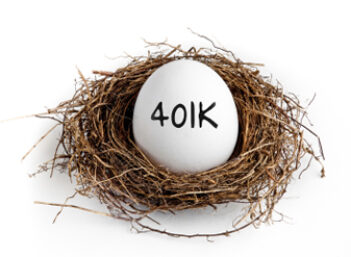What is a 403b Retirement Plan?
A 403(b), commonly referred to as a Tax-Deferred Annuity (TDA) or Tax-Sheltered Annuity (TSA) plan, is a retirement savings plan available to employees of certain public education organizations, non-profit employers and cooperative hospital service organizations, as well as to self-employed ministers.
How Does a 403b Retirement Plan Work?
Organizations offer 403(b) tax-deferred retirement plans to eligible employees to allow for long-term investment growth, similar to a 401(k) plan. Contributions to these plans generally take one of three forms:
- The employer makes contributions to the plan through a salary-reduction agreement.
- The employee makes contributions to the plan.
- The employee makes contributions to the plan and the employer makes a matching contribution.
What is the 403b Contribution Limit?
For 2019, the basic salary deferral (contribution) limit for 403(b) plans was $19,000 per year. The IRS regularly increases this contribution limit to reflect a higher cost of living for retirees due to inflation, so this contribution limit is likely to increase in the future.
Here's a brief look at the 403(B) contribution limits imposed by the IRS in recent years:
403b Contribution Limits for 2015: $18,000
403b Contribution Limits for 2016: $18,000
403b Contribution Limits for 2017: $18,000
403b Contribution Limits for 2018: $18,500
403b Contribution Limits for 2019: $19,000
Differences of the 401k Vs a 403b Retirement Plan
A 403(b) plan offers several unique benefits distinguishing it from a 401(k):
- 403(b) Age 50 + Catch-Up: Participants who are age 50 and over are eligible to make additional annual contributions to the 403(b) plan beginning in the year they turn 50. If a participant is already contributing the maximum amount to his/her 403(b) plan, then he/she may also be able to contribute even more using the Catch-Up Contribution. As of 2019, the Age 50+ catch-up contribution limit was $6,000.
- 403(b) Lifetime Catch-Up: This provision is available to employees who have completed at least 15 years of service, and allows participants to contribute up to $3,000 in addition to the regular contribution limit. To qualify for the Lifetime Catch-Up, the 403(b) plan participant must also have contributed an average of less than $5,000 a year to the plan. The maximum lifetime limit for this catch-up provision is $15,000.
- Taxes and Distributions: Taxes on 403(b) plan contributions and earnings are deferred until the plan owner takes a distribution from the plan. When money is withdrawn it is taxed as regular income. Withdrawals are typically made at or after the plan owner has reached the age of 59 1/2. If the plan owner withdraws money from the account prior to retirement age, then he/she will incur a 10% penalty payable to the IRS (unless specific circumstances apply).
- 403(b) Investment Options: Unlike 401(k) plans, 403(b) plan participants cannot invest in individual stocks. Investment options specific to 403(b) plans include annuity and variable annuity contracts with insurance companies, a custodial account that consists of mutual funds, as well as retirement income accounts for churches.
Learn more about 401k retirement plans.



